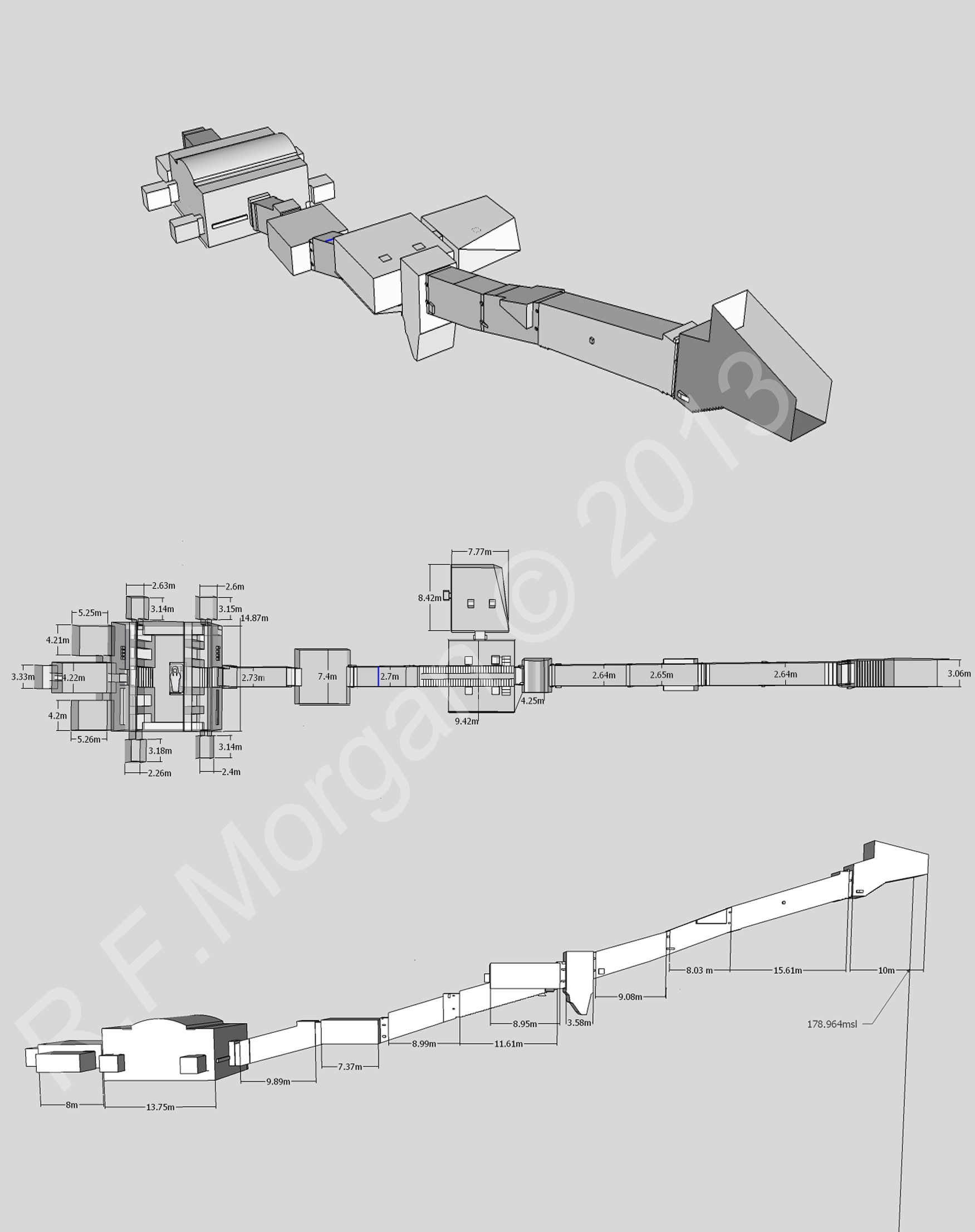KV8 on:
[Wikipedia]
[Google]
[Amazon]
Tomb KV8, located in the  The burial chamber, located at the end of 160 metres of corridor, originally held a set of four nested
The burial chamber, located at the end of 160 metres of corridor, originally held a set of four nested  The pillars in Chamber F were removed to allow passage of the sarcophagus, only two were replaced. The other two pillars may have been stolen by Paneb, a worker in the craftsman's village (
The pillars in Chamber F were removed to allow passage of the sarcophagus, only two were replaced. The other two pillars may have been stolen by Paneb, a worker in the craftsman's village (
Theban Mapping Project: KV8
Includes description, images and plans of the tomb.
KV8 (Tomb of Merenptah)
ÔÇô Tomb Plan, tomb photographs with detailed descriptions and elements that can be inspected
Web Archive Saved on 10 September 2020
File:Egipt 2020 (51827654240).jpg, KV8 Tomb corridor
File:KV8 2022 06.jpg, KV8 tomb burial chamber
File:├ëgypte, Vall├®e des Rois, N├®cropole th├®baine, Tombe de Merenptah (KV8) (49834281528).jpg, Egyptian Divinities in tomb KV8
File:├ëgypte, Vall├®e des Rois, N├®cropole th├®baine, Tombe de Merenptah (KV8) (49835125352).jpg, Delicate Bas-hieroglyph reliefs in a long tomb corridor of KV8
{{DEFAULTSORT:Kv08
Buildings and structures completed in the 13th century BC
Valley of the Kings
Merneptah
Valley of the Kings
The Valley of the Kings, also known as the Valley of the Gates of the Kings, is an area in Egypt where, for a period of nearly 500 years from the Eighteenth Dynasty to the Twentieth Dynasty, rock-cut tombs were excavated for pharaohs and power ...
, was used for the burial of Pharaoh
Pharaoh (, ; Egyptian language, Egyptian: ''wikt:pr Û£ÑÛ£ú, pr Û£ÑÛ£ú''; Meroitic language, Meroitic: ɪ▓ɪñɪº, ; Biblical Hebrew: ''Par╩┐┼ì'') was the title of the monarch of ancient Egypt from the First Dynasty of Egypt, First Dynasty ( ...
Merenptah
Merneptah () or Merenptah (reigned July or August 1213ÔÇô2 May 1203 BCE) was the fourth pharaoh of the Nineteenth Dynasty of Ancient Egypt. According to contemporary historical records, he ruled Egypt for almost ten years, from late July or early ...
of Ancient Egypt
Ancient Egypt () was a cradle of civilization concentrated along the lower reaches of the Nile River in Northeast Africa. It emerged from prehistoric Egypt around 3150BC (according to conventional Egyptian chronology), when Upper and Lower E ...
's Nineteenth Dynasty
The Nineteenth Dynasty of Egypt (notated Dynasty XIX), also known as the Ramessid dynasty, is classified as the second Dynasty of the Ancient Egyptian New Kingdom period, lasting from 1292 BC to 1189 BC. The 19th Dynasty and the 20th Dynasty fu ...
.
 The burial chamber, located at the end of 160 metres of corridor, originally held a set of four nested
The burial chamber, located at the end of 160 metres of corridor, originally held a set of four nested sarcophagi
A sarcophagus (: sarcophagi or sarcophaguses) is a coffin, most commonly carved in stone, and usually displayed above ground, though it may also be buried. The word ''sarcophagus'' comes from the Greek ¤â╬¼¤ü╬¥ ' meaning "flesh", and ¤å╬ ...
. The outer one of these was so voluminous that parts of the corridor had to have their doorjambs demolished and rebuilt to allow it to be brought in. These jambs were then rebuilt with the help of inscribed sandstone blocks which were then fixed into place with dovetail cramps.
 The pillars in Chamber F were removed to allow passage of the sarcophagus, only two were replaced. The other two pillars may have been stolen by Paneb, a worker in the craftsman's village (
The pillars in Chamber F were removed to allow passage of the sarcophagus, only two were replaced. The other two pillars may have been stolen by Paneb, a worker in the craftsman's village (Deir el-Medina
Deir el-Medina (), or Dayr al-Mad─½nah, is an ancient Egyptian workmen's village which was home to the artisans who worked on the tombs in the Valley of the Kings during the 18th to 20th Dynasties of the New Kingdom of Egypt (ca. 1550ÔÇô1080 BC). ...
), for use in his own tomb.
References
* Reeves, N & Wilkinson, R.H. ''The Complete Valley of the Kings'', 1996, Thames and Hudson, London * Siliotti, A. ''Guide to the Valley of the Kings and to the Theban Necropolises and Temples'', 1996, A.A. Gaddis, CairoExternal links
Theban Mapping Project: KV8
Includes description, images and plans of the tomb.
KV8 (Tomb of Merenptah)
ÔÇô Tomb Plan, tomb photographs with detailed descriptions and elements that can be inspected
Web Archive Saved on 10 September 2020
Gallery